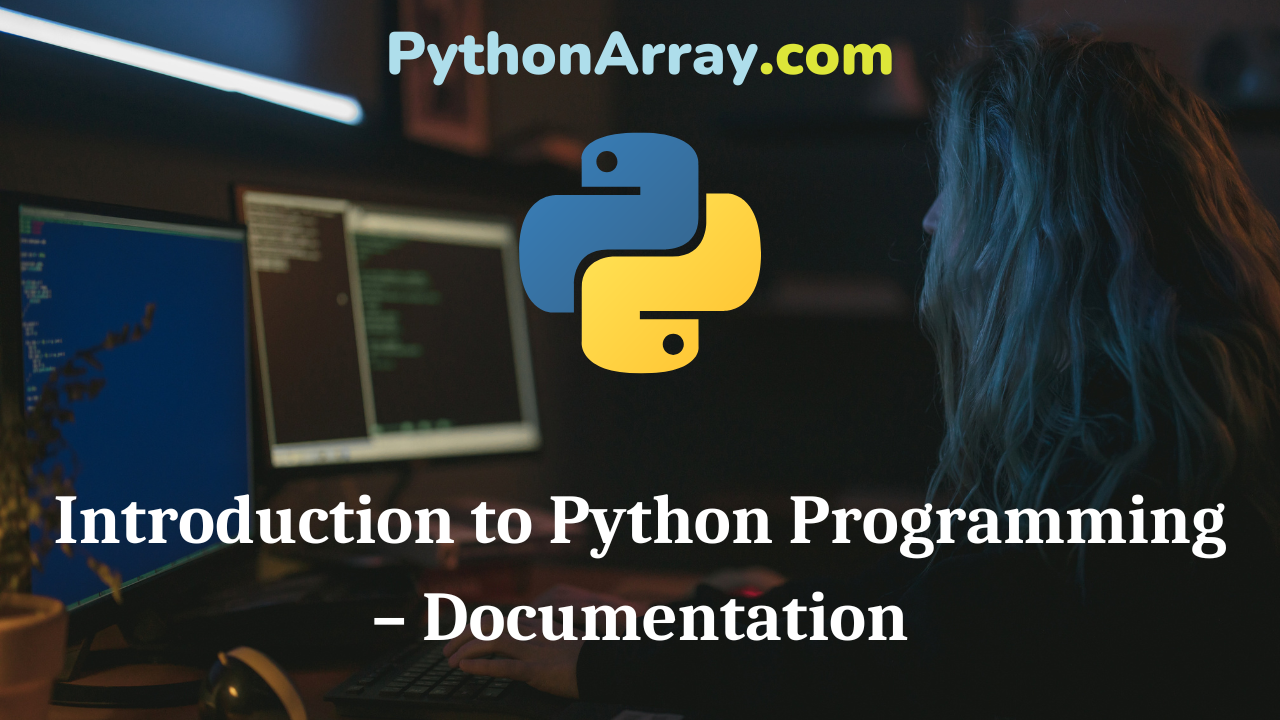You can learn about Introduction to Programming Using Python Programs with Outputs helped you to understand the language better.
Introduction to Python Programming – Documentation
Documentation
Documentation of a software system involves collecting, organizing, storing, and maintaining a complete historical record of programs and other documents used or prepared during different phases of the system development. The documentation of a program is a continuous process. The program specifications, the algorithmic representation, and the program itself can all be considered part of the documentation of a program. However, after successfully completing the program, you must ensure that our documentation is complete and in a finished, usable form. This includes technical documentation for the programmers who may be working with and modifying the completed program and user-level documentation for the program users.
Documentation starts when you first begin to formulate a problem statement and continues as you devise a solution, express the solution algorithmically, and code the algorithm as a computer program. In other words, documentation is an inherent part of a program.
Most programs that are written by professional programmers are used in a production environment. This means that once a program is deemed operational it is used on a regular basis, usually by people other than the author(s). For example, programs to process payrolls, maintain inventories, or handle hotel or airline reservations are invariably used by people who did not write them.
Moreover, these people are usually not even programmers. In this sort of environment, you can see the need for the following two different kinds of documentation.
User documentation
Technical documentation
- Introduction to Python Programming – Interpreter
- Introduction to Python Programming – Algorithms
- Introduction to Python Programming – Programming Languages
User Documentation
It provides the information that one needs in order to use a program. This information includes a num¬ber of different items. These items are as follows:
- A description of the application area of the program or what this program will do.
- A description of the input data that the program requires.
- A description of the output produced by the program.
- A description of the commands needed to start the program.
- A description of the kinds of interactions that are possible with the program.
- An explanation of all the messages that the program can produce.
- An account (in non-technical terms) of the performance capabilities and limitations of the program.
Technical Documentation
This kind of documentation is addressed to programmers who might get the task of modifying the program at some time. Perhaps, a mistake will become apparent after the program has been placed technical documentation is a necessity.
Aims of Documentation
The aims of documentation are as follows:
a. To make available a clear description of the work done so far and help in the design of the system by working to a set of standards. The documen¬tation needs to be kept up-to-date throughout the project.
b. Good documentation ensures that everyone involved in the system (system designers, programmers, and users) fully understand how their aspect of the system will work. For example, what type of data will be inputted and how, and what information will be available from the system. This brings any misunderstandings or disagreements to the surface before they become deeply entrenched in the system.
c. To ensure that the system can be maintained after completion, even though the programmers involved in the original design or programming of the system may not be available. It is essential that proper documentation is kept to enable a newcomer to make necessary corrections, alterations, or enhancements.
Program Maintenance
Program maintenance covers a wide range of activi¬ties, including correcting coding and design errors, updating documentation and test data, and upgrading user’s support. In other words, maintenance may be viewed as enhancements i.e. adding, modifying or developing the code to support changes in the specifications
